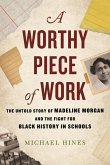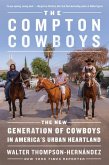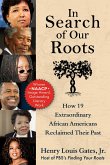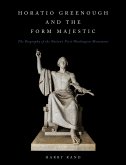1
Arrivals
The priests sailing on board the ship that carried the first English settlers to Maryland feared they might not make it at all. The sea itself turned against them.
The ship, the Ark, was a modern marvel, four hundred tons of wood and iron. But it shuddered and keeled on its voyage as howling winds tore its mainsail and raging waters dislodged its rudder and swept the deck. There were some 140 souls on board: men and women, noblemen and indentured servants, Protestants and Catholics, adventurers and priests, all clinging to the vessel tossed by the raging sea.
Father Andrew White had envisioned the journey to Maryland as a divine mission to bring Christianity to a new world. But on that night, he feared that mission would end before it began, with the ship engulfed by the ocean.
So he prayed. He called to the heavens, describing the Ark&rsquo s sacred mission, and promised to dedicate his life to bringing Catholicism to the native people. &ldquo I had scarcely ended,&rdquo he marveled, when the winds began to subside and the ocean began to calm, sparing the ship.
The Ark stopped at Barbados, Guadeloupe, and Virginia. Then, in March 1634, the ship sailed up the Potomac River and anchored at a small island in Maryland that the priests named St. Clement&rsquo s. Disembarking, the voyagers found a land of oak and walnut groves, verdant meadows, and flocks of herons that swooped and soared over the shimmering waters. The men carved a rough cross from a tree and fell to their knees as the Jesuit priest officiated at the first Catholic Mass in the British colonies in America. &ldquo We erected it as a trophy to Christ the Savior,&rdquo wrote Father White, describing the cross, &ldquo with great emotion of soul.&rdquo
They had been sent to Maryland under the auspices of Cecil Calvert, Lord Baltimore, a prominent English Catholic, who had received permission from the king of England to establish a new territory. English Catholics, viewed as disloyal to the monarchy because of their suspected allegiance to the pope, faced a raft of harsh restrictions at home. They could be fined, imprisoned, deported, even executed for practicing their faith. The new colony would be a place where they could worship freely, a place where gentlemen farmers and fortune hunters could acquire vast tracts of land, where impoverished white women could work in households of the wealthy and impoverished white men could work the fields and then save to buy plots of their own.
Lord Baltimore would allocate more than twenty thousand acres of the colony&rsquo s land to the early Jesuits. In order to work the land, they planned to rely on indentured servants&mdash Father White brought somewhere between twenty and forty- four with him on that first voyage&mdash and initially focused their evangelizing on the people indigenous to the region, the Piscataway. &ldquo We had not come thither for the purpose of war, but for the sake of benevolence, that we might imbue a rude race with the precepts of civilization, and open up a way to heaven,&rdquo wrote Father White with the characteristic condescension common among Europeans at the time.
Nobody knew whether Catholicism would thrive or wither in the fledgling colony in those early years, but the first reports weren&rsquo t promising. Four of the first fourteen priests to settle in Maryland returned to England within a year. Four died of yellow fever. Three died in Virginia. One was killed in an accidental shooting. And two, including Father White himself, were shipped back home in chains when a Protestant uprising toppled Maryland&rsquo s Catholic governor.
Still, White&rsquo s fellow Jesuits continued to spread the faith, seeking converts among the native people, Protestant settlers, and newcomers who kept coming to the colonies hungry for opportunity and undeterred by the political tumult, hardship, and uncertainty they found there. Among them was Ann Joice, who arrived on a ship that pulled in to the wharf sometime around 1676. She was a teenager, and she had waited for weeks on the sea crossing to feel this new land under her feet. She would tell the people she met that she had been born in the tropics, in a slave society, and that she had ended up in England sometime in the mid- 1600s. There, she told them, she had signed on as an indentured servant to Charles Calvert, the son of Cecil Calvert. The Calverts had regained control of the colony from the Protestants, and Charles had become Maryland&rsquo s new proprietor.
The passing centuries have swept away much of her story. Her kinfolk no longer remember the name of the mother who bore her, the village that nurtured her childhood, or how she found her way to Europe. But they do know that she stepped off that ship dreaming of a new life. Black people, who first arrived as captives in the British colonies in 1619, were not always assumed to be slaves. And in the early decades following the Jesuits&rsquo arrival, Maryland had become a place where they could wrest some autonomy from employers and enslavers and savor a measure of independence and freedom.
Black people accounted for a tiny fraction of the population at the time&mdash less than 1 percent in the 1660s and 1670s&mdash and most of them, like Ann, had been born in the Caribbean or had spent time there or elsewhere in the Americas. Historians have described them as the charter generations, the first generations of Black people to establish roots in the British territory in the Chesapeake. Many spoke English, practiced Christianity, knew how to navigate life in the European colonies, and worked side by side with white laborers.
George Alsop, a white indentured servant who worked in Maryland, painted a rosy portrait of life there, one that might have appealed to a young Black woman dreaming of a better life for herself. He described fair- minded masters who allowed servants to rest indoors during sweltering summers and required little outdoor work during bitter winters. He pointed out that indentured servants who successfully completed their four- or five- year terms of service could become landowners in their own right, describing laws that required such servants to receive &ldquo Fifty Acres of Land, Corn to serve him a whole year, three Sutes of Apparel, with things necessary to them, and Tools to work with all&rdquo once their contracts ended. Such indentured servants would become &ldquo Masters and Mistresses&rdquo themselves, he wrote.
And if Ann had asked, the Catholics who arrived in Maryland with the first bands of English settlers might have offered, as proof, the story of a mixed- race man who had accompanied them, a man known as &ldquo Mathias Sousa, a Molato.&rdquo De Sousa served the Jesuits for several years as an indentured servant and then set out on his own. Living as a free man, he entered into contracts, testified in court, led a trading expedition, and even joined free white men at a gathering of the General Assembly, the colony&rsquo s legislative body, where he may have voted.
But de Sousa himself might have told Ann a different story. Hardship had cut his time as a free man agonizingly short. By 1641, he had fallen into debt and was forced back into indentured servitude. He might also have warned Ann of the threat to Black men and women in British America, which had only grown since his own arrival. In 1641, Massachusetts became the first British colony to recognize slavery as a legal institution. Connecticut followed in 1650. In 1662, Virginia&rsquo s General Assembly passed a law that ensured that the children of an enslaved woman would also be slaves.
By 1664, Maryland had passed its own law, declaring that &ldquo all Negroes or other [slaves] already within [the colony] And all Negroes and other [slaves] to bee hereafter imported&rdquo would henceforth be considered slaves for life, as would their children. The situation on the ground was more complex. Some Black people&mdash likely a small and rapidly shrinking number&mdash continued to work as indentured servants, and some even took their employers to court to defend their rights. With Calvert, Lord Baltimore, himself as her patron, Ann may have felt confident that her work contract would be honored. But she lived in a time when blackness and slavery were quickly becoming synonymous.
Charles Calvert lived in a grand manor on a plantation in St. Mary&rsquo s County known as Mattapany, near the mouth of the Patuxent River. Ann became a familiar figure in his home, tending to the kitchen and the table of the most prominent family in the colony even as she tended her own dreams. Some of the old- timers said that she was of mixed race, while others described her as &ldquo jet black.&rdquo She was &ldquo a pretty woman,&rdquo one recalled, born into &ldquo an East India family&rdquo who worked as either a cook or a maid. Ann told her children and grandchildren that the arrangement was meant to be temporary. Once she completed her term of indenture with Lord Baltimore, the Calverts would go their way and she would go hers.
In 1684, Calvert sailed home to England. He planned to return to Maryland, but in the meantime, he sent Ann to the home of his powerful cousin Colonel Henry Darnall, a wealthy Catholic who served as the colony&rsquo s deputy governor, where she could complete her contracted service. Ann went, bearing her indenture papers and the promise from Calvert himself.
Hinweis: Dieser Artikel kann nur an eine deutsche Lieferadresse ausgeliefert werden.
Arrivals
The priests sailing on board the ship that carried the first English settlers to Maryland feared they might not make it at all. The sea itself turned against them.
The ship, the Ark, was a modern marvel, four hundred tons of wood and iron. But it shuddered and keeled on its voyage as howling winds tore its mainsail and raging waters dislodged its rudder and swept the deck. There were some 140 souls on board: men and women, noblemen and indentured servants, Protestants and Catholics, adventurers and priests, all clinging to the vessel tossed by the raging sea.
Father Andrew White had envisioned the journey to Maryland as a divine mission to bring Christianity to a new world. But on that night, he feared that mission would end before it began, with the ship engulfed by the ocean.
So he prayed. He called to the heavens, describing the Ark&rsquo s sacred mission, and promised to dedicate his life to bringing Catholicism to the native people. &ldquo I had scarcely ended,&rdquo he marveled, when the winds began to subside and the ocean began to calm, sparing the ship.
The Ark stopped at Barbados, Guadeloupe, and Virginia. Then, in March 1634, the ship sailed up the Potomac River and anchored at a small island in Maryland that the priests named St. Clement&rsquo s. Disembarking, the voyagers found a land of oak and walnut groves, verdant meadows, and flocks of herons that swooped and soared over the shimmering waters. The men carved a rough cross from a tree and fell to their knees as the Jesuit priest officiated at the first Catholic Mass in the British colonies in America. &ldquo We erected it as a trophy to Christ the Savior,&rdquo wrote Father White, describing the cross, &ldquo with great emotion of soul.&rdquo
They had been sent to Maryland under the auspices of Cecil Calvert, Lord Baltimore, a prominent English Catholic, who had received permission from the king of England to establish a new territory. English Catholics, viewed as disloyal to the monarchy because of their suspected allegiance to the pope, faced a raft of harsh restrictions at home. They could be fined, imprisoned, deported, even executed for practicing their faith. The new colony would be a place where they could worship freely, a place where gentlemen farmers and fortune hunters could acquire vast tracts of land, where impoverished white women could work in households of the wealthy and impoverished white men could work the fields and then save to buy plots of their own.
Lord Baltimore would allocate more than twenty thousand acres of the colony&rsquo s land to the early Jesuits. In order to work the land, they planned to rely on indentured servants&mdash Father White brought somewhere between twenty and forty- four with him on that first voyage&mdash and initially focused their evangelizing on the people indigenous to the region, the Piscataway. &ldquo We had not come thither for the purpose of war, but for the sake of benevolence, that we might imbue a rude race with the precepts of civilization, and open up a way to heaven,&rdquo wrote Father White with the characteristic condescension common among Europeans at the time.
Nobody knew whether Catholicism would thrive or wither in the fledgling colony in those early years, but the first reports weren&rsquo t promising. Four of the first fourteen priests to settle in Maryland returned to England within a year. Four died of yellow fever. Three died in Virginia. One was killed in an accidental shooting. And two, including Father White himself, were shipped back home in chains when a Protestant uprising toppled Maryland&rsquo s Catholic governor.
Still, White&rsquo s fellow Jesuits continued to spread the faith, seeking converts among the native people, Protestant settlers, and newcomers who kept coming to the colonies hungry for opportunity and undeterred by the political tumult, hardship, and uncertainty they found there. Among them was Ann Joice, who arrived on a ship that pulled in to the wharf sometime around 1676. She was a teenager, and she had waited for weeks on the sea crossing to feel this new land under her feet. She would tell the people she met that she had been born in the tropics, in a slave society, and that she had ended up in England sometime in the mid- 1600s. There, she told them, she had signed on as an indentured servant to Charles Calvert, the son of Cecil Calvert. The Calverts had regained control of the colony from the Protestants, and Charles had become Maryland&rsquo s new proprietor.
The passing centuries have swept away much of her story. Her kinfolk no longer remember the name of the mother who bore her, the village that nurtured her childhood, or how she found her way to Europe. But they do know that she stepped off that ship dreaming of a new life. Black people, who first arrived as captives in the British colonies in 1619, were not always assumed to be slaves. And in the early decades following the Jesuits&rsquo arrival, Maryland had become a place where they could wrest some autonomy from employers and enslavers and savor a measure of independence and freedom.
Black people accounted for a tiny fraction of the population at the time&mdash less than 1 percent in the 1660s and 1670s&mdash and most of them, like Ann, had been born in the Caribbean or had spent time there or elsewhere in the Americas. Historians have described them as the charter generations, the first generations of Black people to establish roots in the British territory in the Chesapeake. Many spoke English, practiced Christianity, knew how to navigate life in the European colonies, and worked side by side with white laborers.
George Alsop, a white indentured servant who worked in Maryland, painted a rosy portrait of life there, one that might have appealed to a young Black woman dreaming of a better life for herself. He described fair- minded masters who allowed servants to rest indoors during sweltering summers and required little outdoor work during bitter winters. He pointed out that indentured servants who successfully completed their four- or five- year terms of service could become landowners in their own right, describing laws that required such servants to receive &ldquo Fifty Acres of Land, Corn to serve him a whole year, three Sutes of Apparel, with things necessary to them, and Tools to work with all&rdquo once their contracts ended. Such indentured servants would become &ldquo Masters and Mistresses&rdquo themselves, he wrote.
And if Ann had asked, the Catholics who arrived in Maryland with the first bands of English settlers might have offered, as proof, the story of a mixed- race man who had accompanied them, a man known as &ldquo Mathias Sousa, a Molato.&rdquo De Sousa served the Jesuits for several years as an indentured servant and then set out on his own. Living as a free man, he entered into contracts, testified in court, led a trading expedition, and even joined free white men at a gathering of the General Assembly, the colony&rsquo s legislative body, where he may have voted.
But de Sousa himself might have told Ann a different story. Hardship had cut his time as a free man agonizingly short. By 1641, he had fallen into debt and was forced back into indentured servitude. He might also have warned Ann of the threat to Black men and women in British America, which had only grown since his own arrival. In 1641, Massachusetts became the first British colony to recognize slavery as a legal institution. Connecticut followed in 1650. In 1662, Virginia&rsquo s General Assembly passed a law that ensured that the children of an enslaved woman would also be slaves.
By 1664, Maryland had passed its own law, declaring that &ldquo all Negroes or other [slaves] already within [the colony] And all Negroes and other [slaves] to bee hereafter imported&rdquo would henceforth be considered slaves for life, as would their children. The situation on the ground was more complex. Some Black people&mdash likely a small and rapidly shrinking number&mdash continued to work as indentured servants, and some even took their employers to court to defend their rights. With Calvert, Lord Baltimore, himself as her patron, Ann may have felt confident that her work contract would be honored. But she lived in a time when blackness and slavery were quickly becoming synonymous.
Charles Calvert lived in a grand manor on a plantation in St. Mary&rsquo s County known as Mattapany, near the mouth of the Patuxent River. Ann became a familiar figure in his home, tending to the kitchen and the table of the most prominent family in the colony even as she tended her own dreams. Some of the old- timers said that she was of mixed race, while others described her as &ldquo jet black.&rdquo She was &ldquo a pretty woman,&rdquo one recalled, born into &ldquo an East India family&rdquo who worked as either a cook or a maid. Ann told her children and grandchildren that the arrangement was meant to be temporary. Once she completed her term of indenture with Lord Baltimore, the Calverts would go their way and she would go hers.
In 1684, Calvert sailed home to England. He planned to return to Maryland, but in the meantime, he sent Ann to the home of his powerful cousin Colonel Henry Darnall, a wealthy Catholic who served as the colony&rsquo s deputy governor, where she could complete her contracted service. Ann went, bearing her indenture papers and the promise from Calvert himself.
Hinweis: Dieser Artikel kann nur an eine deutsche Lieferadresse ausgeliefert werden.








